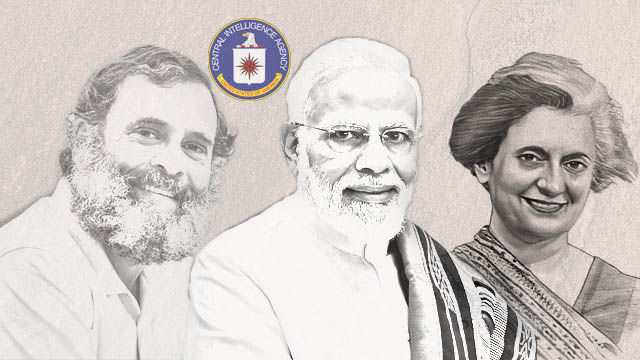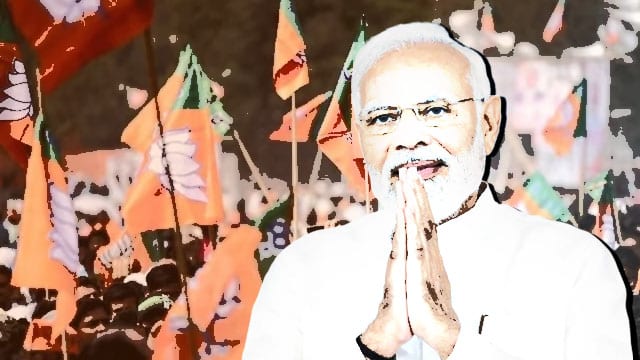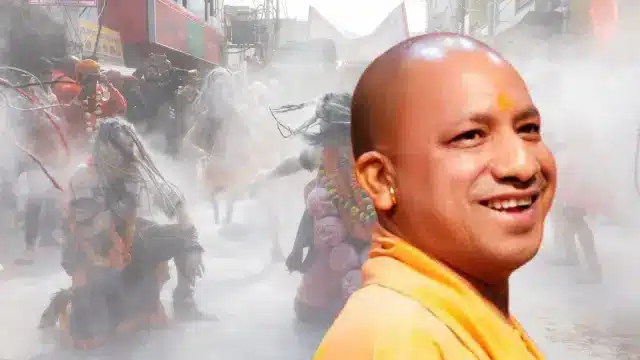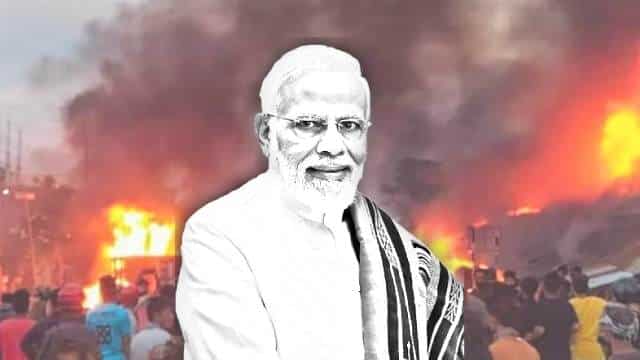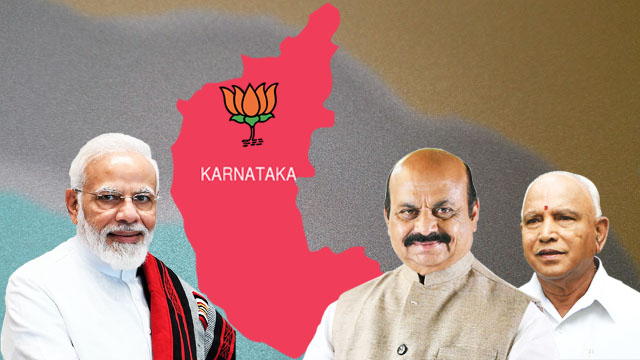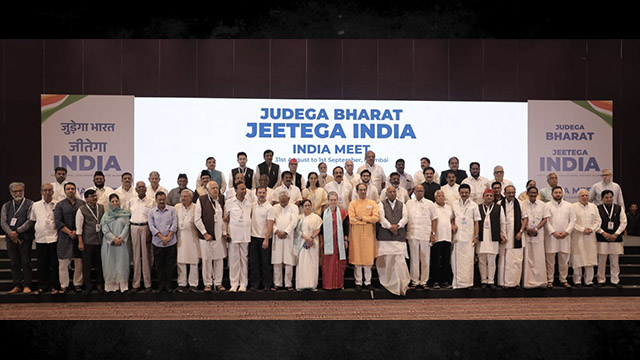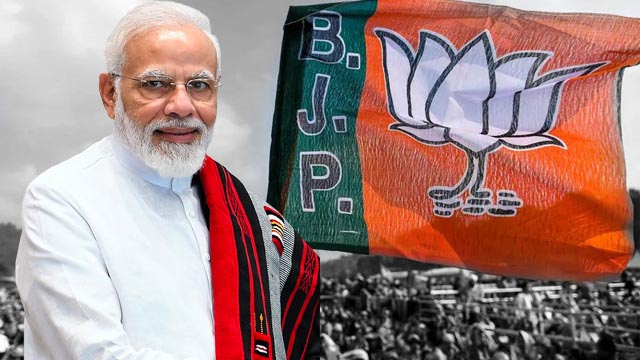Recently, India’s ruling Bharatiya Janata Party’s (BJP) leader and former minister Ravishankar Prasad accused the Indian National Congress (INC) party’s member of the Parliament (MP) from Kerala’s Wayanad, Rahul Gandhi of seeking western intervention in Indian politics and alleged that he had insulted India in a foreign land. The news that Rahul Gandhi sought western intervention in India triggered obstreperous debates on television channels, resulting in a high-voltage political drama.
“BJP would like to emphatically state with great agony that Rahul Gandhi, in his speeches, has sought to shame India’s democracy, polity, parliament, political system and judicial system”, Prasad accused. Prasad asked the INC’s current president Mallikarjun Kharge and former president Sonia Gandhi to condemn Rahul Gandhi’s controversial statement in the UK.
Prasad referred to Gandhi’s comments in the Chatham House dialogue in the UK and his earlier comments where he apparently sought western intervention in Indian politics. Earlier, during his UK tour, Gandhi also drew a comparison between India and Ukraine, by magnifying the purported threat of Chinese aggression, which the INC has been accusing the BJP-led Union government of concealing.
Apparently, Rahul Gandhi sought western intervention in India in a quite subtle way. While speaking to the press on the state of Indian democracy, which he claimed suffered extensively under Prime Minister Narendra Modi, Gandhi said, “The surprising thing is that the so-called ‘defenders of democracy’, which are the United States, European countries, seem to be just oblivious that a huge chunk of the democratic model has come undone. We, the Opposition, are fighting that battle. It’s not just an Indian battle, it’s a battle for a huge part of democratic people on this planet.”
Soon after the BJP alleged that Rahul Gandhi sought western intervention in India, Gandhi had to retreat from his earlier statement. Within 24 hours of seeking western intervention in Indian politics, Gandhi said the problem with India’s democracy is an internal issue and shall be resolved internally.
Responding to a reporter asking Gandhi during the Chatham House dialogue what he expects from the western governments and the people, the INC MP said, “Well, look, first of all it’s our problem. Right? It’s an internal problem; it’s an Indian problem, and the solution is going to come from inside. It’s not going to come from outside. However, the scale of Indian democracy means that democracy in India is a global public good. It impacts way further than our boundaries. If Indian democracy collapses, in my view democracy on the planet suffers a very serious, possibly fatal, blow.”
Gandhi’s U-turn didn’t stop the BJP from attacking the MP. He was called out for insulting India in a foreign country. The BJP also questioned the INC’s patriotism. However, a deep delving into Indian political history will show some interesting facts regarding politicians seeking ‘foreign intervention’ and allegations of a “foreign hand”.
The INC’s tryst with ‘foreign intervention’ in the past
In 1983, the US secret service Central Intelligence Agency (CIA) published a report on Indian politics. It was a time when the BJP was in its nascent stage and the INC—then known as Congress (I)—under Indira Gandhi was in power after it won power in the 1980 general election.
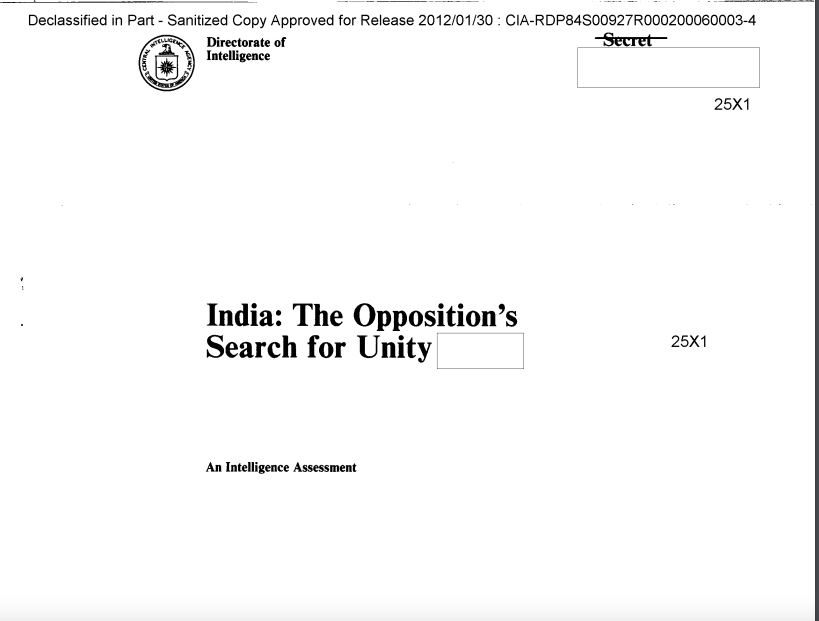
The CIA report showed that the accusations levelled by the BJP on the INC were once used by Ms Gandhi against her opponents. Ms Gandhi always blamed the invisible “foreign hand” for troubles in India, may it be people’s discontent, students’ movement or unrest in the former Jammu & Kashmir or Punjab.
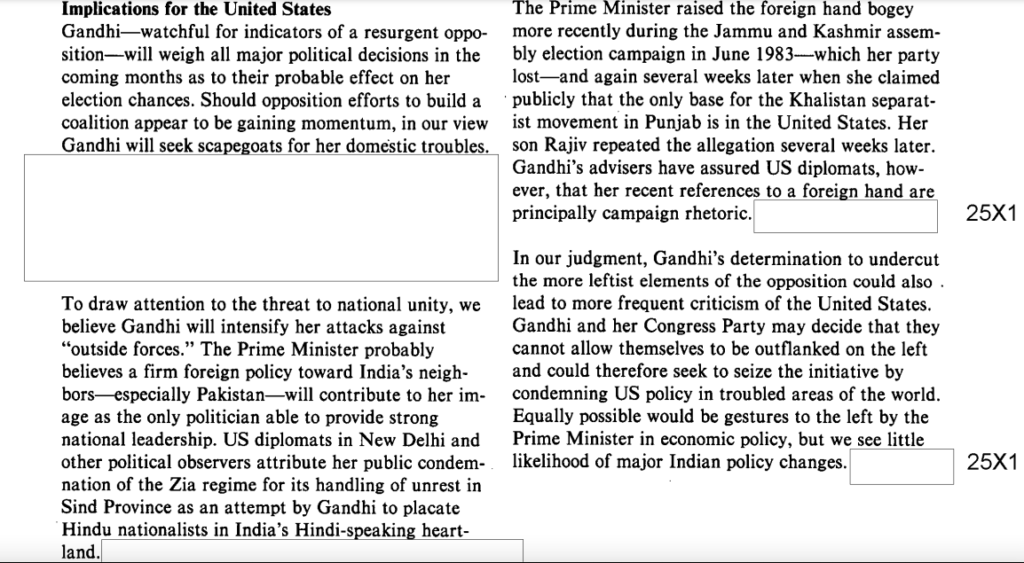
The CIA report stated: “The United States could become a major target of Gandhi’s frustrations, in our judgement. During her campaigns in Andhra Pradesh and Karnataka, Gandhi accused ‘outside forces’ of abetting efforts to undermine the political system and national unity. US diplomats reported soon afterwards that some Indian officials in the Prime Minister’s office suspected US involvement in the Congress Party’s subsequent state assembly losses in January. Gandhi herself failed to rule out possible US involvement in election violence in Assam the following month, according to press reports (sic).”
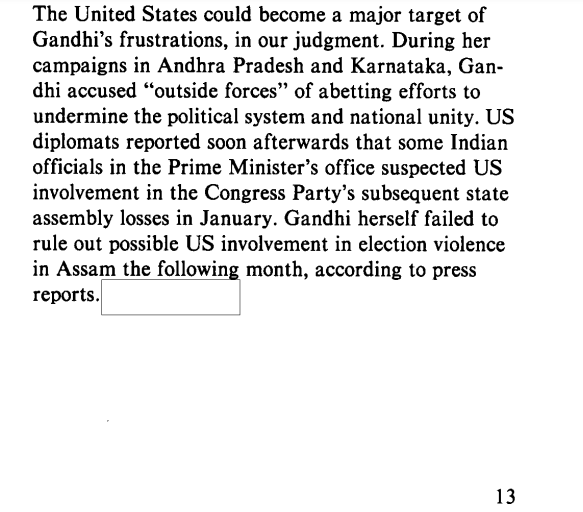
Although the CIA got confirmation from Gandhi’s advisors that the allegations against the US are “campaign rhetoric”, it was suspected that the cornered prime minister would continue to blame the US. The CIA report said, “Gandhi’s determination to undercut the more leftist elements of the opposition could also lead to more frequent criticism of the United States. Gandhi and her Congress Party may decide that they cannot allow themselves to be outflanked on the left and could therefore seek to seize the initiative by condemning US policy in troubled areas of the world.”
Russel Jack Smith, a former CIA officer who operated in India in the 1970s, wrote in his book, The Unknown CIA: My Three Decades With the Agency (New York, 1992), “CIA agents… were to be found according to Madame Gandhi, beneath every charpoy and behind every neem tree.”
However, there was no such hysteria about the CIA’s presence in India between 1947 and the mid-1960s, when the INC’s Jawaharlal Nehru—Ms Gandhi’s father and Rahul Gandhi’s great grandfather—and Lal Bahadur Shastri were the prime ministers. Rather, soon after the British colonial rulers transferred power to the INC-led Indian government, the CIA established a working relationship with India’s Intelligence Bureau (IB) to suppress the communist movement.
Ellsworth Bunker, the US ambassador to India between 1956 and 1961, confirmed in 1979 that the CIA had paid kickbacks to the INC. Bunker said that the CIA paid money to ultra-right Maharashtra Congress leader SK Patil in the late 1950s to sustain the anti-communist campaign of the Union government and to topple the elected Communist Party of India (CPI) government in Kerala (Ellsworth Bunker, Oral History, June 18 & July 17 1979, NY, Butler Library, Columbia University, 67-68).
David S Burgess, the labour attaché in New Delhi’s US embassy corroborated Bunker’s testimony. Daniel Patrick Moynihan, the US ambassador to India in the early 1970s, confirmed that the CIA had funded the Congress (I) campaigns against the communists in Kerala and West Bengal (Moynihan, A Dangerous Place, 1978).
The CIA got a shot in the arm in the late 1950s and early 1960s, thanks to India’s conflict with China on the border dispute triggered by the British-drawn borders that included historically Chinese lands into Indian territory. It’s alleged by the Chinese that the Indian government entered into the Tibet fiasco and supported the deposed Dalai Lama due to the CIA’s insistence, irking Beijing.
Several former CIA officials claimed that the Nehru government didn’t oppose collaboration between the IB and the CIA. Moreover, the CIA also spent a large amount of money to sponsor right-wing forces in India, which appeared viable options for it to stop the communists.
John Kenneth Galbraith, a Harvard economist and former diplomat posted in India, alleged that the CIA had invested a lot of money in Indian politics. Galbraith wrote an article titled “CIA Needs a Tug on its Purse String”, which was published in The Washington Post on March 12th 1967, listing the allegations against the CIA.
Galbraith alleged in this article that during his diplomatic tenure in India, he objected to the CIA’s interference in Indian politics. He alleged that Richard M Bissel, the then deputy director of the CIA’s clandestine operations, briefed him about a proposal to spend millions of dollars on bankrolling the election campaigns of the pro-western politicians and subsiding anti-communist newspapers and magazines.
However, after 1967, when Ms Gandhi became the prime minister, her paranoia regarding the CIA, caused trouble for the agency and affected India’s bilateral relationship with the US. Although the US continued with its financial aid packages for India, as part of its programme to curtail the communist movement in South Asia, Ms Gandhi tilted more towards the Soviet Union.
As per Moynihan, although the US-India relationship reached its nadir by 1974, and the US wanted to close the CIA operations in India, Ms Gandhi suddenly turned to the CIA and sought funds. He alleged that the CIA had paid kickbacks to Congress (I) even when Ms Gandhi was accusing the “foreign hand” behind her government’s troubles.
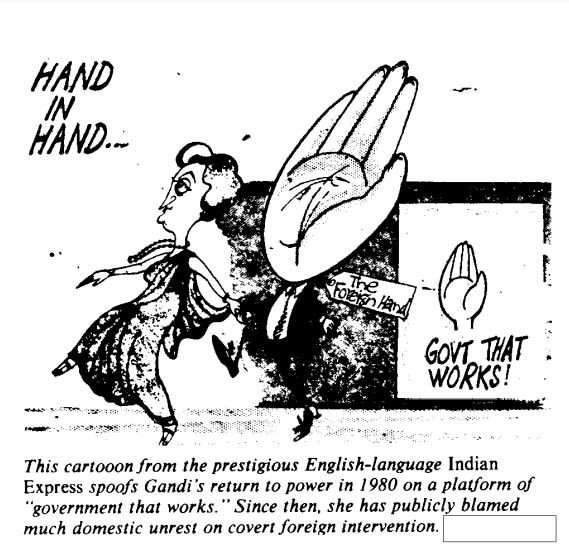
Ms Gandhi continued accusing the “foreign hand” behind the growing discontent against her government, which led her to impose National Emergency in June 1975, which was withdrawn before the 1977 general elections. She alleged that the Opposition demanding her ouster was funded by “foreign forces”, which made her government curtail civil rights and jail most of the Opposition leaders.
Not all her paranoia regarding the CIA’s intervention in Indian domestic politics was unfounded. Apart from toppling several elected governments in Asia, Africa and Latin America, whenever they opposed the US hegemony, the CIA was also involved in actively supporting the Indian non-communist opposition parties.
The firebrand socialist trade union leader George Fernandes, who became a minister in the Janata government and later in the BJP-led National Democratic Alliance (NDA) government in the 1990s, sought the help of the CIA to carry out sabotage activities in India. This was revealed from the leaked cables of the US embassy in India released by WikiLeaks.
Even after returning to power in 1980, Ms Gandhi continued her quintessential “foreign hand” rhetoric until her assassination. However, after her, when her eldest son Rajiv Gandhi took control of the mantle, the Congress (I) took a liberal approach towards the US and the CIA got a stronger foothold in India.
It was the CIA’s intervention that helped the top brass of the Union Carbide company to escape from India without facing any punitive action after the infamous Bhopal gas leak incident. It has been reported by the CIA that to ensure a better relationship with the US, Rajiv sacked a minister to arrest the “drift in foreign and domestic affairs”.
Due to the tumultuous situation caused by Mikhail Gorbachev’s Glasnost and Perestroika campaigns in the Soviet Union, aid from Moscow became irregular and in a fast-changing geopolitical scenario, Rajiv started approaching the US vigorously, especially in sectors like telecom, information and technology and others.
After he was killed in 1990, the Congress (I) formally ensured a working relationship with the US from 1991, which was strengthened later under BJP’s Atal Bihari Vajpayee-led NDA government in 2000 and the INC-led United Progressive Alliance (UPA) government in the mid-2000s.
However, even during the UPA’s rule, a high-ranking officer of India’s external intelligence agency Research & Analytical Wing (R&AW) fled to the US, and it was revealed that he was a CIA agent. The INC still went ahead with a controversial US-India nuclear deal and strengthened defence ties between these countries.
While Rahul Gandhi sought western intervention in India, labelling the US and the West as the guards of democracy, he should have looked back into the history of his INC, which had a dynamic and inconsistent relationship with the western world since 1967, and how the CIA had exploited the antagonisms in Indian politics to advance American interests in the subcontinent.
Rahul Gandhi sought western intervention in India but what about the BJP?
The BJP emerged as an independent political outfit from its earlier avatar, the Bharatiya Jana Sangha (BJS), in 1980. The BJS was a parliamentary front of the Rashtriya Swayamsevak Sangh (RSS)—a Hindu ultra-nationalist organisation with the world’s largest private paramilitary force—which merged into the Janata Party that fought the 1977 general elections against Ms Gandhi’s Congress (I).
Soon after the Janata Party’s government was formed, former BJS leaders like Vajpayee and Lal Krishna Advani were asked to shun their RSS membership and remain loyal to the Janata Party. However, they refused. The former BJS leaders resigned from the Janata Party and founded the BJP in April 1980, ostensibly due to the RSS’s insistence.
The RSS has been accused of stoking communal tension, targeting the minority Muslims in northern and western states. Although the Nehru government had banned the outfit following the assassination of MK Gandhi in 1948, it helped it return to the mainstream as a pawn to prevent the CPI. The RSS continued its communal business, apparently through myriads of frontal organisations, and the anti-Emergency movement between 1975 and 1977 helped its political aggrandisement.
As the CIA, which apparently wanted to topple Ms Gandhi’s government due to its closeness to the Soviet Union, had been supporting the Opposition by providing them with funds and avenues to propagate their narratives, as alleged by the Congress (I), the RSS, which was considered as an idiosyncratic parochial communal organisation until the beginning of the 1970s, gained immense international popularity through the anti-Emergency campaigns.
The BJP, which promised a more “business-friendly” government, vis-à-vis the ‘socialistic’ rhetoric of the Congress (I), experienced a meteoric rise, riding on the Ramjanmabhumi Movement in Ayodhya, which culminated with the razing down of the 15th-century Babri Masjid on December 6th 1992. However, the CIA, despite the US’s favourable stance regarding the BJP’s ultra-right political orientation, didn’t show much enthusiasm regarding its communal politics.
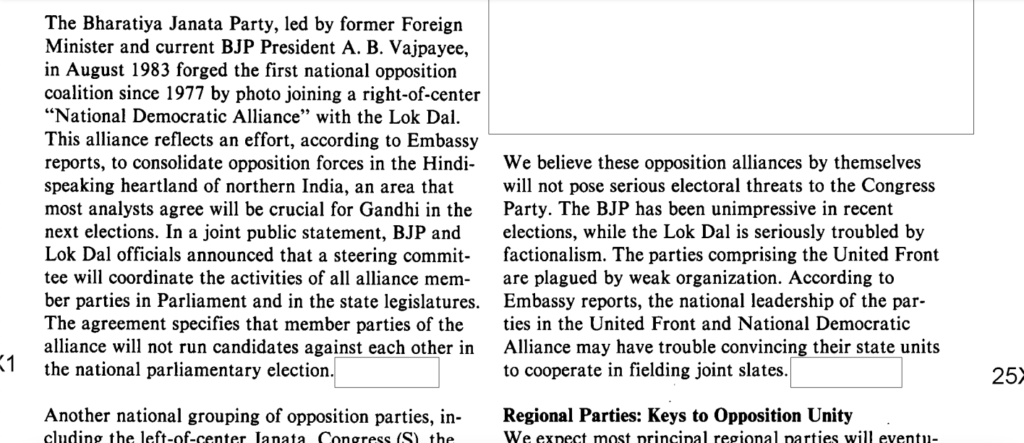

In this 1983 report, the CIA accused the RSS of fomenting communal trouble. Although the CIA overlooked the BJP’s potential to rise as an omnipotent political entity in India in 1983, it has outlined the RSS’s agenda of turning India into a monolithic state. There was even an attempt in 2013 by the Democrats to probe the Hindutva groups. However, the US maintained some ties with the RSS in India under the guise of academic research.
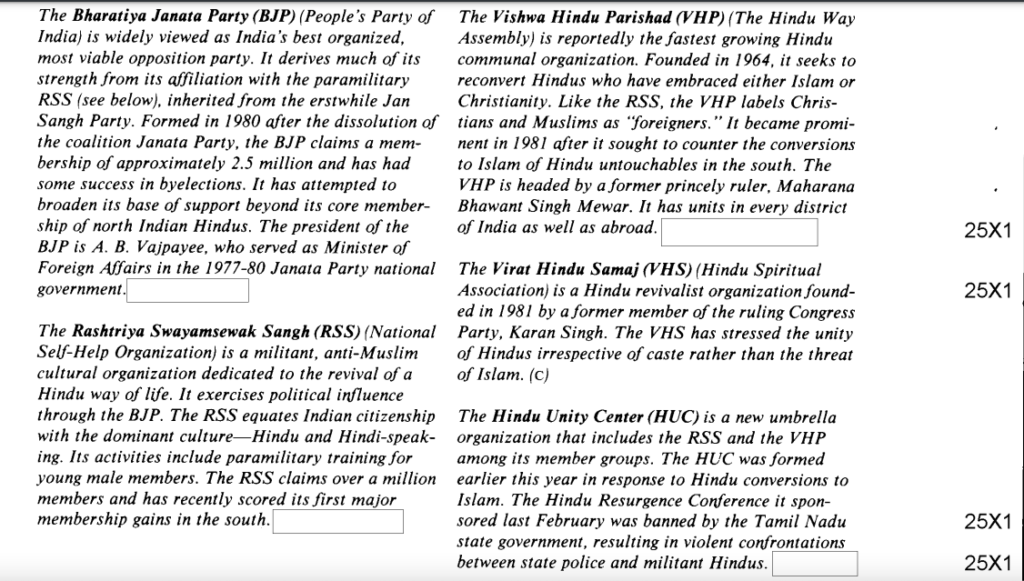
Although the former CIA officers had alleged that the agency paid kickbacks to the anti-communist opposition parties in India during the Cold War, it’s not clear whether the BJP or the RSS had ever received any funds. However, CIA documents released by WikiLeaks alleged that Subramanian Swamy, a former Janata Party leader who joined the BJP, assisted the agency in India during Ms Gandhi’s rule.
However, the RSS’s international wing Hindu Swayamsevak Sangh (HSS) has received enough political support in the US and the UK and operates in these countries with sheer impunity. The BJP also opened its overseas unit called the Overseas Friends of the BJP (OFBJP) to garner support in foreign countries.
The RSS and other Hindu ultra-nationalist organisations were accused of being hand-in-glove with the British colonial rulers between the 1920s and the late 1940s. The tryst between the RSS and right-wing British politics continued beyond India’s independence. The video below shows how Margaret Thatcher, the ultra-right former British prime minister, attended an HSS event in the UK.
The OFBJP, which registered as a “foreign agent” in the US, the HSS, and other Hindutva organisations affiliated with the RSS, like the Vishwa Hindu Parishad (VHP), have gained immense support in the US. The OFBJP and other RSS-affiliated organisations like the HSS lobbied extensively in the US to lift the travel ban on Modi imposed after the 2002 anti-Muslim pogrom in the state of Gujarat, then ruled by him. The ban was lifted soon after Modi became the prime minister in 2014.
Since then, the OFBJP, HSS and other Hindutva-incensed organisations, which primarily work within the upper-caste Hindu Indian diaspora in the US, have experienced rapid growth in their strength and funding. It’s alleged that the Hindutva organisations played a major role in the election of former president Donald Trump, who shared a bonhomie with Modi.
Even though the CIA had named the VHP and its youth wing Bajrang Dal —accused of inciting anti-Muslim pogroms in India— as “religious militant” organisations in the World Fact Book in 2018, the Hindutva camp’s honeymoon with the Trump-led administration continued unabated, allegedly due to their shared Islamophobia.
Modi attended an event named “Howdy Modi” in Houston, Texas, in mid-2019, following his re-election. Modi appealed to the audience, mostly consisting of the upper-caste Hindu Indian diaspora, to vote for Trump in 2020. It was a maiden election appeal from an Indian statesman in a foreign country on behalf of an incumbent head of state.
However, even though the Modi regime worked comfortably with the Trump regime, and their common anti-China standpoint in the “Indo-Pacific” war theatre founded the basis of renewed bilateral ties, there remained several hiccups, as the Modi government has cracked its whip on the US fundings, especially from the CIA-affiliated organisations to Indian non-government organisations (NGOs) and political parties.
CIA-affiliated National Endowment for Democracy (NED), George Soros’s Open Society Foundations (OSF), and the World Movement for Democracy (WMD) were put under scanner by the Modi government in June 2016. The government alleged that the NED, OSF and the WMD are involved in funding non-Foreign Contribution Regulation Act (FCRA) registered NGOs, which are campaigning for climate change and other issues.
While the Modi government has upped its ante against the NGOs receiving foreign funds, it has been nonchalant over the amount of money that the RSS receives through foreign channels. The India Development and Relief Fund (IDRF), a Maryland-based NGO set up by former World Bank officer Vinod Prakash, has been accused of funnelling more than $3m to RSS-affiliated organisations in India. The IDRF came under a storm in 2003 for sending money to RSS-linked organisations after receiving donations from big IT corporations in the US.
Apart from foreign funding, the BJP continues to receive the highest amount of donations made to political parties through an opaque electoral bond system. Over the years, since the Modi government tweaked the laws to conceal the source of donations to the political parties, the BJP’s share of electoral bonds has been quite higher than all other parties combined. It’s not clear where the source of the funding is and what’s the ulterior motive, if any, behind such huge donations pouring in for the party.
The western intervention question
Although the US has been involved in manipulating public opinion in India —which is one of the few countries in the world with a large urban middle-class base supportive towards American hegemony and military aggressions— there is no reason for it to topple the Modi government as the latter has maintained a cordial relationship with Washington DC in business and military matters.
What possibly irks the US establishment is Modi’s foreign policy, which subtly advocates for multilateralism and converges with the views of America’s bitter enemies like China and Russia. However, as the Indian establishment has a severe contradiction with the Chinese over the borders demarcated by the British colonial rulers, the US continues to exploit the fissure and tries to use India as a pawn against China. The US won’t jeopardise the status quo until India decides to join Russia and China to form a powerful Troika.
When Rahul Gandhi sought western intervention in India, he also raised the China question to apparently earn sympathy from the US ruling clique. However, even though the US government will try to coax the Modi government to change its foreign policy and build a stronger India-US-West bonding, which also suits the RSS’s strategic interests, it’s not feasible for Washington DC or the West to fuel tensions in India and jeopardise their business interests in the country. It seems Mr Gandhi’s appeal for western intervention will find no ears in Langley or the White House as of now. But he surely gave his BJP detractors a taste of the paranoia Indira Gandhi had about the “foreign hand”.
Tanmoy Ibrahim is a journalist who writes extensively on geopolitics and political economy. During his two-decade-long career, he has written extensively on the economic aspects behind the rise of the ultra-right forces and communalism in India. A life-long student of the dynamic praxis of geopolitics, he emphasises the need for a multipolar world with multilateral ties for a peaceful future for all.

